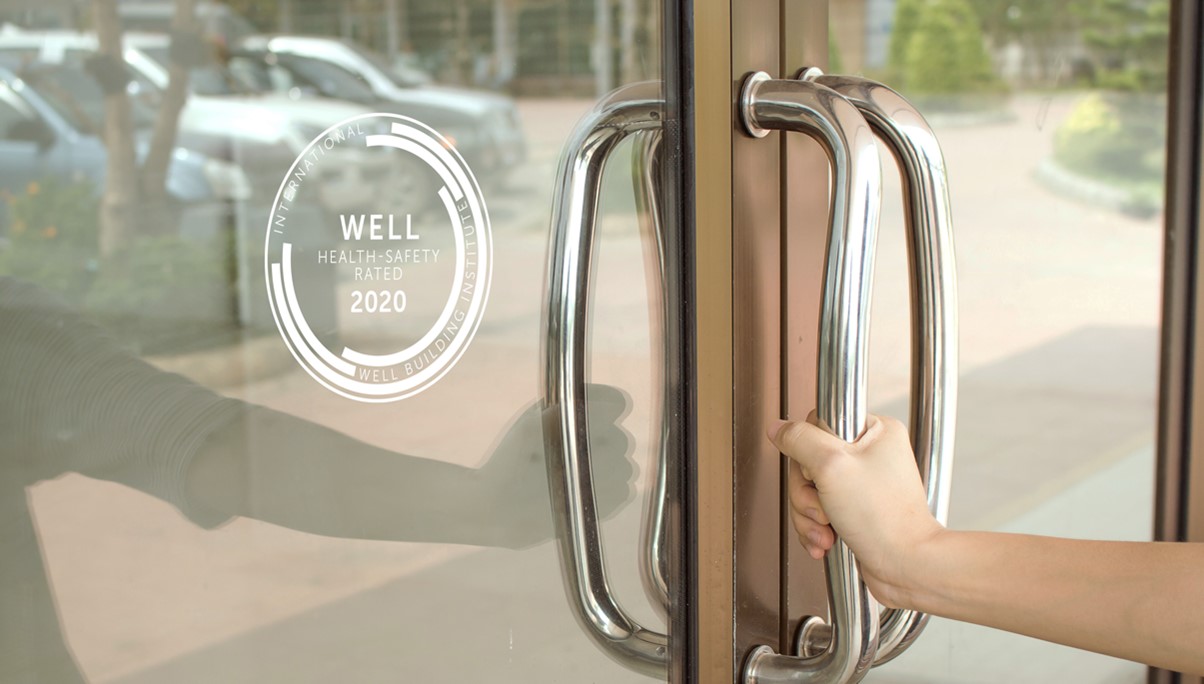Building a better mousetrap for indoor health & safety
Susan Illman of International WELL Building Institute shares proven strategies for wellbeing.

Once upon a time, it was cool to have a foosball table and beanbag chairs in the workplace. Enter 2021 and employees are hankering for clean surfaces, proper ventilation and a place to hang their mask. Foosball: nice to have. Clean air: must-have.
And, as millions of employees continue to work from home during the pandemic, workplaces are preparing for some level of return while tending to their employees’ well-being from afar. Workplace safety and employee health and wellness have combined to present employers with unprecedented multiple challenges that are ever-changing. COVID-19 has had a transformational impact on all aspects of our society, including buildings.
Susan Illman is at the intersection of both these areas as director of Workplace Wellness at the International WELL Building Institute. Her job includes ensuring the wellbeing of the Institute’s 88-plus employees while collaborating with her colleagues to promote health and safety standards at buildings across the globe.

WELL projects have now crossed the 1.6 billion square foot mark worldwide in more than 80 countries. More than two million square feet are registered for WELL every day. IWBI also administers the WELL Accredited Professional program in 98 countries, and more than 16,000 individuals have registered for or achieved the WELL AP credential.
Considering that transmission of COVID-19 largely occurs indoors, where people spend approximately 90% of their time, the new rating from the Institute is an immediate response to the urgent need to address building safety.
Underlying IWBI’s framework is the principle that how we approach where we work, shop and congregate can have a tremendous impact on our health and wellbeing. Its WELL Building Standard and WELL Health-Safety Ratings are both a blueprint and an accountability instrument for organizations worldwide.
An evidence-based blueprint to accelerate change
From her home in New York, Illman spoke to Ragan’s Workplace Wellness Insider about pandemic-related changes to workplace well-being and the unique opportunity for companies worldwide to raise their health and safety standards using a common blueprint.
Illman brings more than 20 years of experience and a masters in public health to IWBI. She worked for Columbia University’s public health and psychiatric departments and spent the earlier years of her career doing research around domestic violence and the effects of prenatal exposure to air contaminants. “Research more often than not leads to more research,” she says. “In my 22-year career in public health, this is the first time I am putting it to practical use.”
IWBI recently launched a major ad campaign to promote the WELL Safety Rating featuring Lady Gaga, Jennifer Lopez, Robert Dinero, Michael B. Jordan and others. (Check out this interview with Lady Gaga talking about the Safety Rating on CNBC)
Once a company meets the standards, it displays the WELL seal on the front door of a building. Illman describes these health standards as “putting common sense health information to work every day” to help companies to get back to business.
The Health-Safety Rating is informed by guidance from the World Health Organization, the U.S. Centers for Disease Control and Prevention and global disease and emergency management agencies and standard-making bodies. It included input from nearly 600 public health experts, virologists, academics, architects, interior designers and business leaders.
A minimum of 15 of the 20-plus features of the WELL Health-Safety Rating need to be met by organizations to receive the seal. The core areas are:
- Cleaning and Sanitization Procedures
- Emergency Preparedness Programs
- Health Service Resources
- Air and Water Quality Management
- Stakeholder Engagement and Communication
Communications is key to success
“The failure to communicate will not prepare a workforce to buy in and achieve health safety,” says Illman. “We’ve increased frequency and modes of communication. Communicate proudly to employees so they know they’re protected and safe, it builds confidence.”
The safety rating covers initiatives like proper hand-washing, cleaning with non-toxic products, having an emergency preparedness plans in place, supporting mental health recovery services, extra cleaning of meeting rooms, doors knobs and providing single direction pathways.
“It takes forethought and increasing the frequency of communication,” says Illman. “You can’t allow these things to happen quietly; you need to communicate these to your employees and your clients.”
Practicing what they preach
As IWBI offices remain closed until all employees are vaccinated, Illman spends a good part of her day nourishing employees’ need for both connectivity and personal space. Among the initiatives the Institute has rolled out for employees during the pandemic:
- Fitness and yoga classes that are led by employees’ favorite trainers
- Subscription for all employees to the meditation app Headspace
- Workshops on stress management, ergonomics, and financial wellness
- Cooking events—including a “scratch to table” prepping of a healthy meal in 30 minutes
- “Crib Tours” of each other’s homes
- Quarterly book group—currently they are reading My Year Abroad by Chang-Rae Lee
“The most successful well-being program is one focused on the whole person,” says Illman. “We’re focusing on all areas of wellness because you can’t be healthy in one and not all of them. Everything is connected.”
The Institute encourages “random reach-outs” among colleagues and accountability partners to help one another meet personal goals. Illman’s personal goal is to improve her presentation skills, and her accountability partner helps keep her motivated to practice.
Illman cautions against the “always-on” work life and encourages employers to institute quiet hours—one in the morning and one in the afternoon. These could be meeting-less time periods, or, when in person, the office is “quiet as a library.”
At IWBI, when employees are at the office, they can use color titles to indicate their availability, with a red tile meaning heads-down/don’t bother me; yellow meaning it’s OK to ask a question and the green tile signifying “open to chatting.”
As companies consider their return-to-workplace strategies, Illman cautions patience and understanding. “People will need to feel truly safe going back to workplaces. It will be an adjustment, and you need to show you truly care about them.”
She advises a pre-occupancy survey, not assuming anything about how employees feel about coming back to an office. “Be transparent about their concerns and how you’re planning to handle them,” says Illman, who works closely with her PR counterparts to disseminate information internally.
Illman is passionate about workplaces providing employees with healthy snacks, which is one of the Well Standards promoted by the Institute. Prior to the pandemic, she would shop at a local farmers market to bring back to the office kitchen-fresh bread, eggs, fruit, nuts and other healthy snacks that would be available to all employees and, just as importantly, visible to them—by way of see-through cabinets or glass refrigerators or on meeting room tables. Says Illman: “There’s nothing like seeing a beautiful bowl of apples on the table.”







